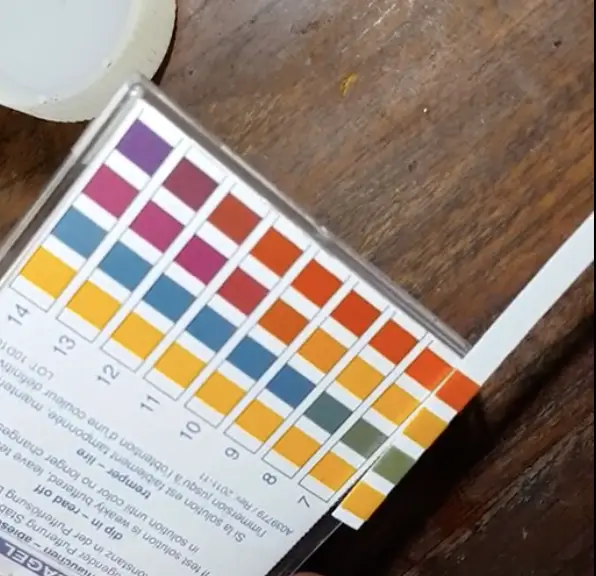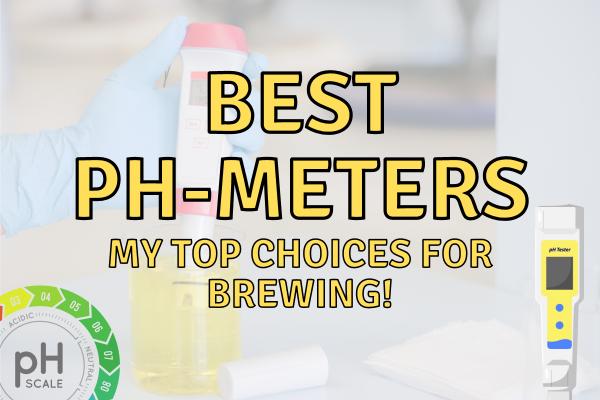Isopropyl alcohol, also known as rubbing alcohol or IPA, is a widely used solvent and cleaning agent. It is commonly found in households and workplaces, used for sanitizing surfaces and as a disinfectant. One important aspect of isopropyl alcohol that people often overlook is its pH value.
So, what is the pH of isopropyl alcohol?
The pH of isopropyl alcohol is typically around 7, which is neutral on the pH scale.
However, this value can vary depending on the concentration and purity of the alcohol and pH cannot be measured on pure alcohol, but no alcohol is really “pure” – we will get into that in a moment!

In this blog post, we will delve deeper into the topic of isopropyl alcohol’s pH value, its significance, and its applications.
What is pH?
Understanding pH
pH is a measure of the acidity or alkalinity of a solution. It is represented on a scale that ranges from 0 to 14, with 7 being neutral.
Solutions with a pH value lower than 7 are considered acidic, while those with a pH value higher than 7 are considered alkaline or basic.
The pH scale is logarithmic, which means that each whole number change in pH represents a tenfold change in acidity or alkalinity.
The catch is that “pH” does not exists without the presence of water (as pH is defined as the negative logarithm of free protons or H+ ions in an aqueous solution…) anyways its nerdy stuff.
The pH of alcohol therefore depends on some H2O being present, which it almost always is as humidity from the air will always provide a source of water even for “pure” alcohols.
Importance of pH
The pH value of a solution is important because it affects the chemical properties and reactivity of the solution. In addition, pH plays a crucial role in various biological systems and industrial processes.

For example, enzymes in our body function optimally at specific pH values; deviations from these values can lead to decreased efficiency or even denaturation of the enzymes. In the brewing industry, the pH of the water used for brewing can greatly impact the taste and quality of the beer.
Isopropyl Alcohol Basics
Chemical Structure and Properties
Isopropyl alcohol, or 2-propanol, is a secondary alcohol with the chemical formula C3H8O. It consists of three carbon atoms, with the central carbon atom bonded to a hydroxyl group (-OH) and two other carbon atoms.

Isopropyl alcohol is a colorless, volatile liquid with a strong, distinct odor. It is miscible with water, meaning it can be mixed with water in any proportion.
Is isopropyl alcohol mostly acidic or basic?
Isopropyl alcohol, also known as rubbing alcohol, is neither a base nor an acid, but some would consider it an acid as it is more likely to give off a proton than to receive one.
It is a type of alcohol, specifically a secondary alcohol, which means it has a hydroxyl group (-OH) attached to a carbon atom that is bonded to two other carbon atoms.
Ad a hydroxyl group can give off a H+ ion, it can act as an acid, but a very (very) weak on, that is!
Therefore, in terms of acidity and basicity, isopropyl alcohol is considered relatively neutral.
Production and Uses
Isopropyl alcohol is typically produced through the indirect hydration of propylene, a byproduct of petroleum refining.
It is widely used as a solvent, cleaning agent, and disinfectant. Common applications include:
- Removing ink stains and adhesive residue
- Cleaning electronic components
- Disinfecting surfaces and medical equipment
- Sterilizing skin before injections or medical procedures
- Cleaning brewing equipment before use
It is often used for cleaning of equipment that comes into contact with your brew. It is often cheaper than ethyl alcohol (ethanol) due to the fact that it is unsafe for consumption and therefore not taxed as heavily.
Factors Affecting the pH of Isopropyl Alcohol
Concentration and Purity
The pH of isopropyl alcohol can be affected by its concentration and purity.
Higher concentrations of isopropyl alcohol may lead to a slightly higher pH value, while impurities in the alcohol can also impact the pH.
For example, the presence of acidic or basic impurities can cause the pH to deviate from neutrality.
Presence of Water
Since isopropyl alcohol is miscible with water, the pH of a solution containing both substances will depend on their relative proportions.
In general, adding water to isopropyl alcohol will cause the pH of the solution to move closer to 7, as water has a neutral pH.
Measuring the pH of Isopropyl Alcohol
Challenges
Measuring the pH of isopropyl alcohol can be challenging, as traditional pH meters and pH paper are designed for use with aqueous solutions. The use of these methods with isopropyl alcohol can lead to inaccurate readings.
Alternative Methods
There are alternative methods for measuring the pH of isopropyl alcohol, such as using non-aqueous pH meters or indicator dyes specifically designed for non-aqueous solvents. These methods are typically more accurate and reliable than using conventional pH meters or pH paper.
Safety Considerations
Isopropyl alcohol is a flammable liquid and should be handled with care. It should be stored in a cool, well-ventilated area away from open flames or heat sources.
When using isopropyl alcohol for cleaning or disinfection, ensure that the area is well-ventilated to avoid inhaling the vapors. Prolonged skin contact with isopropyl alcohol can cause irritation, so it is recommended to wear gloves when handling the substance.
Conclusion
In summary, isopropyl alcohol typically has a pH value of around 7, making it neutral. However, factors such as concentration, purity, and the presence of water can affect its pH. Understanding the pH of isopropyl alcohol is essential for its safe and effective use in various applications.
To conclude, here are 10 key facts about the pH of isopropyl alcohol:
1. The pH of isopropyl alcohol is typically around 7.
2. Isopropyl alcohol is a neutral substance on the pH scale.
3. The concentration and purity of isopropyl alcohol can affect its pH.
4. The presence of water can also impact the pH of isopropyl alcohol.
5. pH is a measure of the acidity or alkalinity of a solution.
6. The pH scale ranges from 0 to 14, with 7 being neutral.
7. Isopropyl alcohol is a widely used solvent and cleaning agent.
8. Measuring the pH of isopropyl alcohol can be challenging with traditional pH meters or pH paper.
9. Non-aqueous pH meters or indicator dyes can be used for more accurate pH measurements.
10. Isopropyl alcohol is flammable and should be handled with care.
FAQs
How acidic is isopropyl alcohol?
Isopropyl alcohol, also known as rubbing alcohol, is mildly acidic. It has a pH range of approximately 5.5 to 7.5, making it slightly acidic on the pH scale. The pH scale ranges from 0 to 14, with 7 being neutral. Substances with a pH below 7 are considered acidic, while those above 7 are considered alkaline or basic. Therefore, isopropyl alcohol falls within the acidic range. It is important to note that while isopropyl alcohol is mildly acidic, it should not be consumed or used for internal purposes as it can be toxic.
Is isopropyl alcohol a strong or weak base?
Isopropyl alcohol, also known as isopropanol, is not a base but rather a weak acid. It has a slightly acidic nature due to the presence of the hydroxyl group (-OH). Isopropyl alcohol can donate a proton (H+) to a stronger base, making it an acid in chemical reactions. However, it is important to note that isopropyl alcohol is primarily used as a solvent and disinfectant rather than a base or acid in typical chemical reactions.
What is the pH value of isopropyl alcohol?
The pH value of isopropyl alcohol (also known as rubbing alcohol) is approximately 5.5. Isopropyl alcohol is considered a weak acid, and its pH level reflects its slightly acidic nature. It is important to note that pH values range from 0 to 14, with values below 7 indicating acidity, 7 being neutral, and values above 7 indicating alkalinity.
Is isopropyl alcohol a weak acid?
No, isopropyl alcohol (also known as rubbing alcohol) is not a weak acid. Isopropyl alcohol is actually a weak base, meaning it has a tendency to accept protons (H+ ions) in a chemical reaction. It has a slightly basic pH of around 7.5-8.0.
Is rubbing alcohol a base or an acid?
Rubbing alcohol, also known as isopropyl alcohol, is neither a base nor an acid. It is classified as a type of alcohol and specifically a secondary alcohol. In terms of its chemical properties, isopropyl alcohol does not exhibit the characteristics of an acid (which donates protons) or a base (which accepts protons). Instead, it is a neutral compound.




